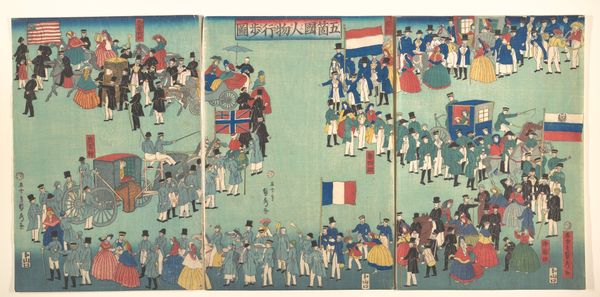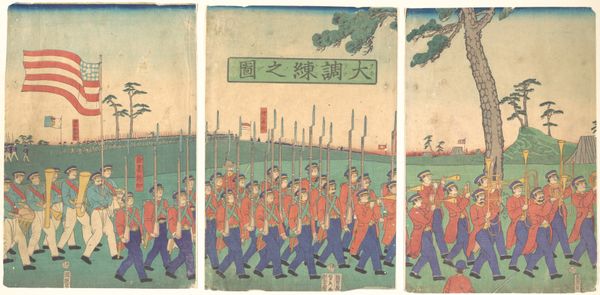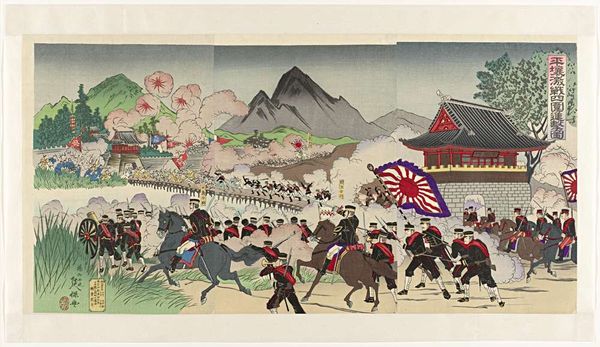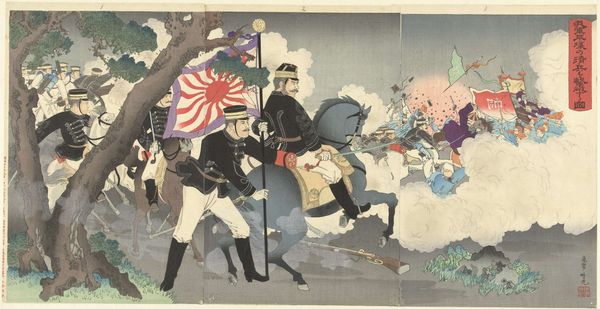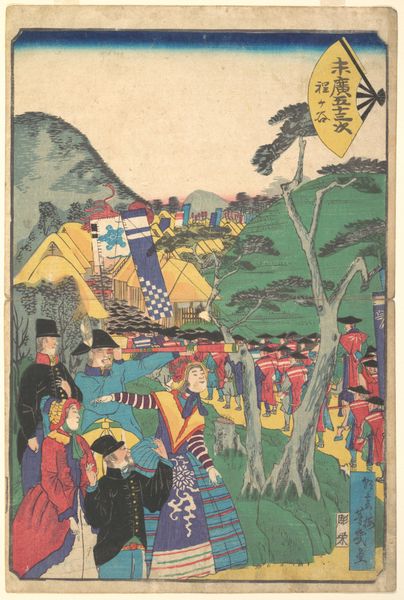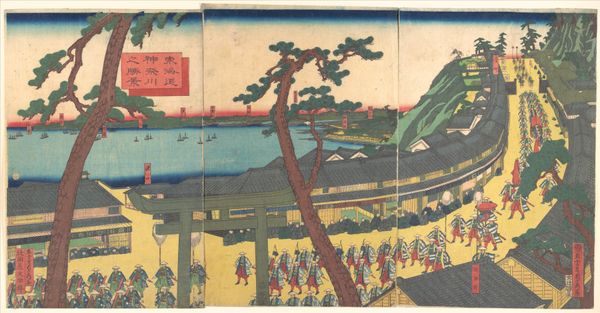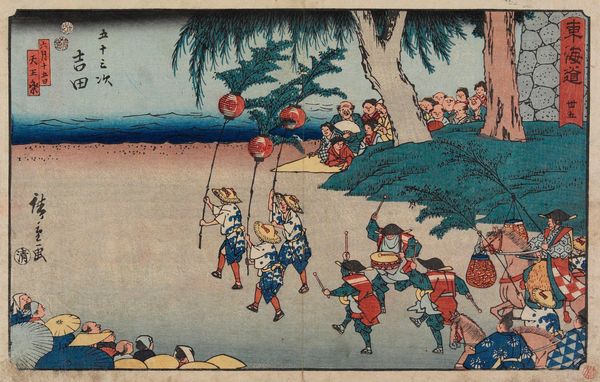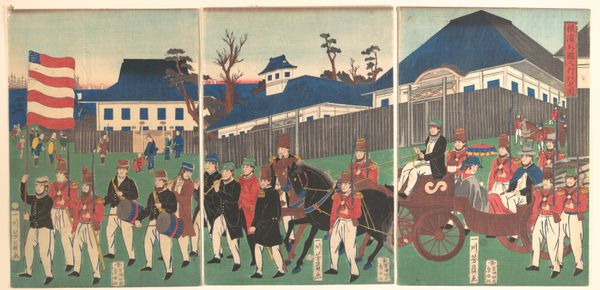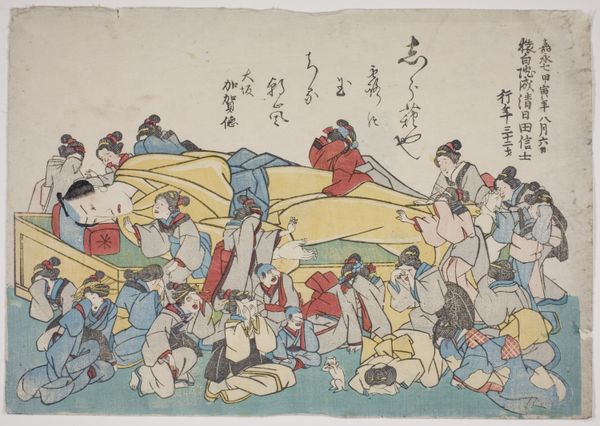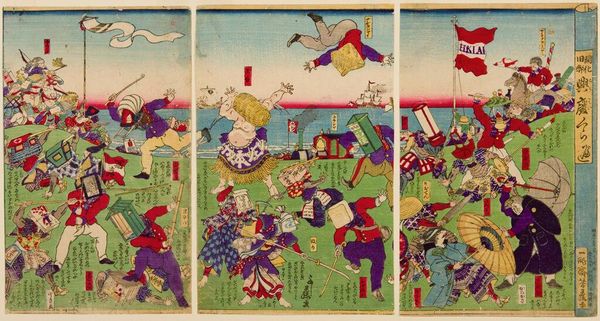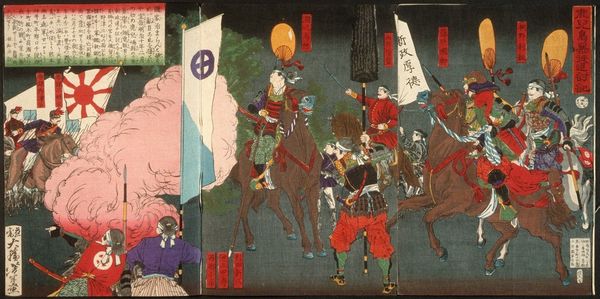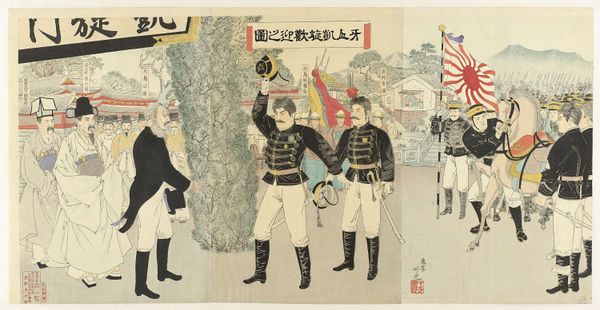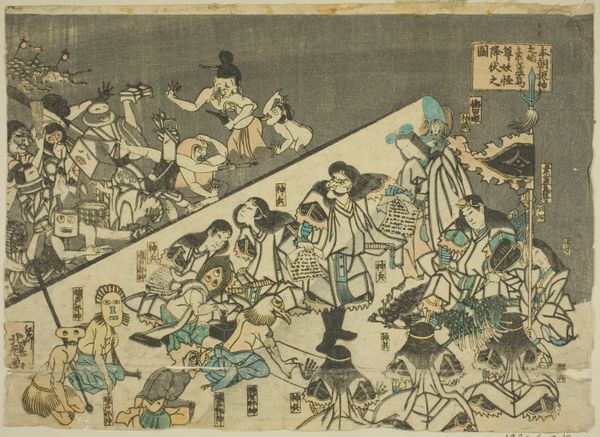
Procession of People from Five Countries: Holland, Russia, France, England and America 1861
0:00
0:00
print, woodblock-print
# print
#
asian-art
#
ukiyo-e
#
japan
#
coloured pencil
#
woodblock-print
#
genre-painting
#
history-painting
#
mixed media
Dimensions: Oban 14 1/4 x 28 5/8 in. (36.2 x 72.7 cm)
Copyright: Public Domain
Editor: This triptych, "Procession of People from Five Countries," was created in 1861 by Utagawa Sadahide. It’s a woodblock print depicting, well, processions of people. What immediately strikes me is the almost staged presentation of these different nationalities. What’s your take on this work? Curator: What interests me is situating this image within the complex political landscape of mid-19th century Japan. This was a time of forced opening to the West, ending centuries of self-imposed isolation. So, these meticulously rendered processions aren't merely ethnographic documents. They are deeply embedded in power dynamics, reflecting Japan's grappling with western influence. Editor: So, you're saying it's not just a snapshot, but a statement? How so? Curator: Consider the gaze implied by the artist. Who is this image for, and what does it mean to represent these foreign powers in this way? Are they being celebrated, scrutinized, perhaps even subtly critiqued through the artist's rendering and compositional choices? Look closely. How does Sadahide depict the individuals of each nation? What specific details does he emphasize or perhaps omit? What are the implications of presenting all these distinct groups side-by-side? Editor: I notice the almost cartoonish depiction, compared to what I understand about traditional Ukiyo-e prints. Almost like he is overemphasizing their “foreignness”. Curator: Exactly! And thinking about it as "history painting" opens the door to questioning which historical narrative is being constructed, and for whom. We must always consider that the artist has a specific intention when representing "the other." In essence, how does it reinforce or challenge the existing social structure? Editor: I see it now. It’s more than just documentation; it's about Japan defining itself in relation to the West during a pivotal historical moment. Thanks. Curator: Precisely. It invites us to reflect on how cultural exchange is rarely neutral and is frequently embedded in power dynamics.
Comments
No comments
Be the first to comment and join the conversation on the ultimate creative platform.
